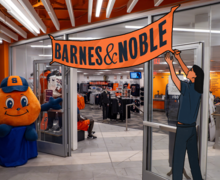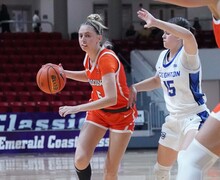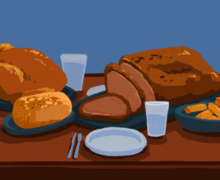Upstate New York hackathon brings students, professionals together to build products
Daily Orange File Photo
Several of the judges at Hack Upstate X were once competitors in the hackathon themselves.
The 10th installment of Hack Upstate took place last weekend in downtown Syracuse at The Tech Garden. The event brought people from around upstate New York to collaborate and create products such as apps and games.
At Hack Upstate, hackers from the upstate New York region gather to share ideas, form teams and create products. Teams are judged on the creativity, execution and demonstration of their product, as well as how impressive the product is to the judges.
In the course of 24 hours, competitors pitched ideas and formed teams to create a product. The teams then demonstrated and presented the product in front of four judges. Prizes included a grand prize, first runner up, best DataCuse hack and best hardware hack.
James Shomar, a first-time judge and program director of StartFast, said Hack Upstate X was a “demonstration of the kind of talent we have available in this part of the country. It’s pretty amazing what some of the people around here are capable of.”
Hack Upstate is an inclusive competition that promotes collaboration in the community among technologists. People of all ages, genders and races from around the region participate.
Since 2013, Hack Upstate has seen competitors turn to judges. Ryan Gaus — a software engineer for Density, a technology company that creates people-counting devices — has won the hackathon before and is now a judge in the competition.
Gaus said he has watched Hack Upstate grow over the years, especially in student participation. He says that over the past two or three years, the number of student competitors has reached 80 percent of total competitors.
“It’s less about what you make and more about how you present it,” he said.
As a judge, Gaus said he looks for everyday products that are presented to show the technical challenges the hacker may have faced in creating the product.
Shomar said he looks for products that leave him questioning, “How did you do that?”
The first runner-up winners created an app that determines if an object is recyclable from its picture. The team created a product that is an innovative solution to a problem, Shomar said, which he said he was excited to see.
The grand prize winners created a game that required everyone in the room to sign in to play on the same screen, and the game did not crash or fail. Shomar said he was impressed by the sophistication and reliability of the product.
Several Hack Upstate judges said they were impressed with the community’s talent. The series, which began in the spring of 2013, occurs twice a year. The first hackathon of 2017, Hack Upstate IX, happened this past spring.
Sam Edelstein, Syracuse’s chief data officer and a Hack Upstate judge, said he got to watch teams use the data he provides to the public through DataCuse, a website he helped create.
Edelstein said it was “incredible to see how quickly people can put together a product that works and that they can present to people.”
Edelstein’s advice to students aspiring to be in the tech business is to get involved in competitions like Hack Upstate to learn more and gain experience.
Jesse Peplinski said he remembers being a nervous college sophomore pitching his idea in front of more than 100 people. This year, he stood on the other side of the table, an event organizer for Hack Upstate.
As a previous competitor, Peplinski said everybody is willing to help people, especially newcomers to the hackathon, and participants will act as mentors.
“I always tell people in these 24 hours at Hack Upstate you’ll often learn more than you would in a month of schooling,” Peplinski said.
Published on October 11, 2017 at 11:18 pm
Contact Gianna: gnpruden@syr.edu





